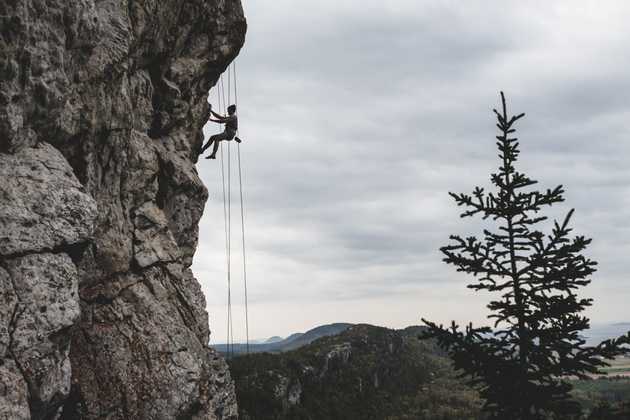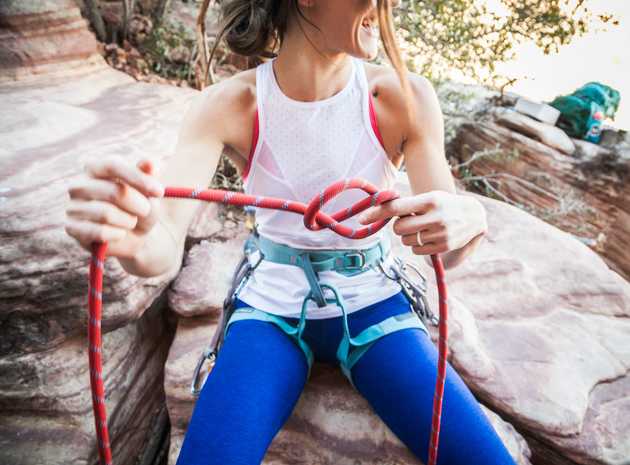As a beginner rock climber, I experienced the scariest moment of a climb at its very end. That is, after I clipped a quickdraw into the first bolt. Which serves as a first securing point and prevents a fall to the ground. It happened after I climbed the crux, which is what rock climbers call the hardest section of a route. It happened at the very top of the route, where I found a couple of bolts connected via a metal chain. This last anchor marks the end of the climb.
To recover the equipment used to climb a route, the last person to finish must untie the knot that connects their harness to the rope at the highest point of the climb. They first attach their harness directly to the anchor. Then, they untie the knot, and thread the end of the rope through the topmost securing point of the route. Lastly, they re-attach themselves to the end of the rope by knotting it. Just before being descended by their climbing partner, who handles the rope, they detach their harness from the anchor.
The first time I find myself in that situation, I hang in the open some 25 meters above ground. I can't see or hear my climbing partner. A layer of rock below me denies direct communication, and the wind carries words I shout over the treetops. Fear invades my mind and sends my body in a mode of flight or fight. As my body shakes, sweat soaks my shirt and runs down my hands. Hands that frantically tie the rope.
The first thing they taught me when I started sport climbing was how to tie a knot. They taught me an eight. If tied correctly, a figure eight knot looks like the number eight. It is thus easily checked for mistakes and hard to tie incorrectly.
But perceived danger and actual danger deviate when I dangle on a short piece of rope above the abyss. I tie and re-tie a knot. Thoughts of doubt race through my mind: "This doesn't look like an eight! Isn't the rope too short here?" What helps in such a situation is regulating my breath, observing body tensions and releasing them, and suppressing negative thoughts. And reasoning, repeating again and again that I know how to tie a figure eight knot.
It takes me fifteen minutes before I tie a knot that I trust. "Tighten", I shout at the top of my lungs. My partner pulls the rope, which builds up tension against my harness. The rope pulls on the knot, tightening it, and finally carrying my weight as I descend to the ground.
Building trust into an environment is a deeply human experience. And something people already familiar to an environment frequently forget is an issue. When I work with someone who is new to their position, I try to remember that they may be in a situation where they don't fully trust the work they are doing. And that this is something everybody experiences.
In the five years I have been climbing outdoors, I did not mess up a figure eight knot once. It is foolproof. None of my peers ever messed up that knot either. The more often I retrieve equipment from a finished climb, the less fearful I become. Nowadays I do not think twice when I detach myself from the rope. I know that things will be fine.

